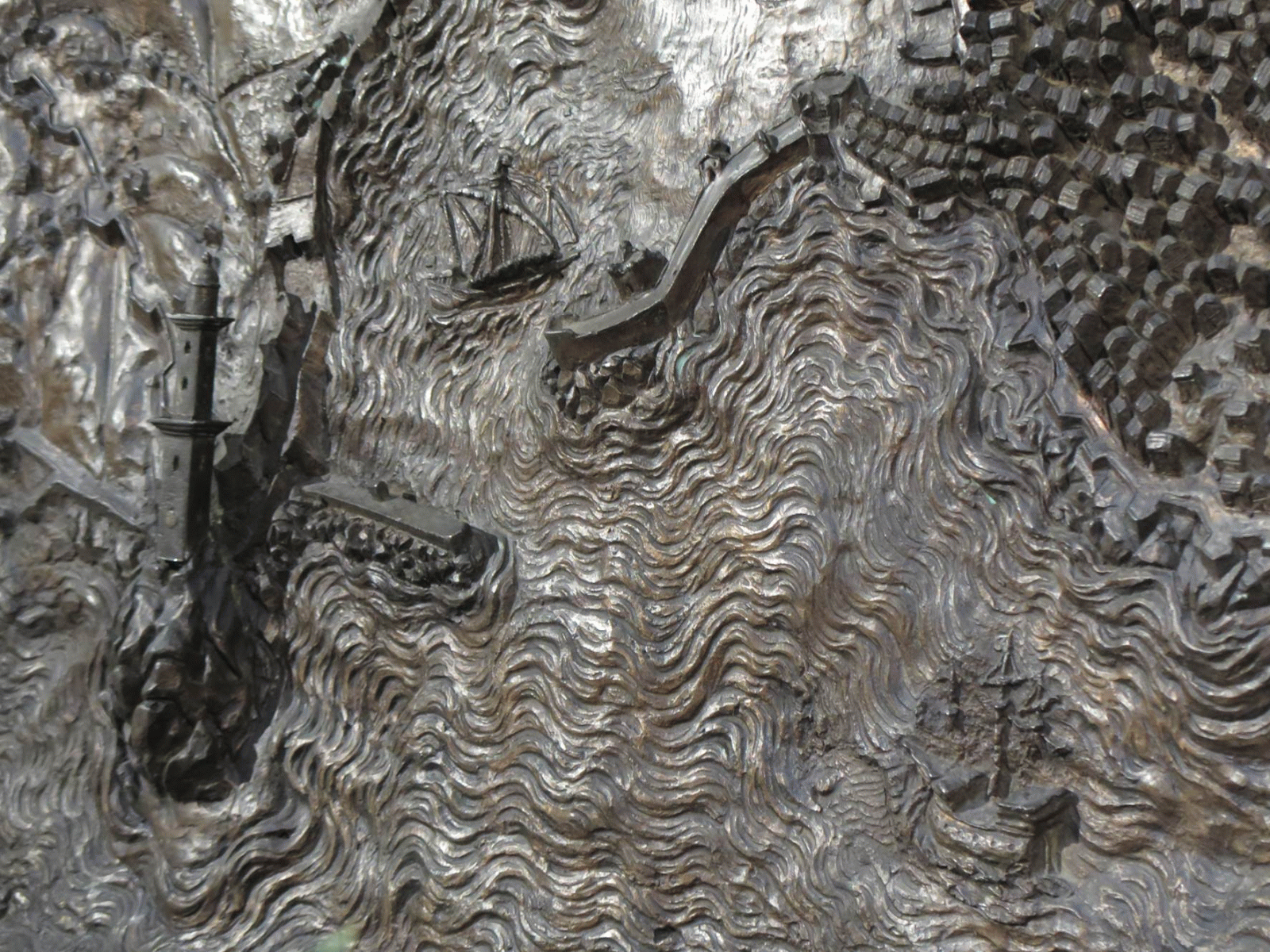Forschung
The Queen of Genoa and Baroque Territorial Aesthetics
Davide Ferri | Wiss. Assistent

Giovanni Battista Bianco, Mary as the Queen of Genoa (detail), ca. 1649–52, bronze, Genoa, San Lorenzo, choir (photo: Davide Ferri).
In 1637 the Republic of Genoa proclaimed the Virgin Mary as "Empress, Queen, and Regent of the Republic and all its states" (Imperatrice, Regina e Governatrice della Repubblica e di tutti i suoi Stati). This event led to the creation of images that combined the depiction of the new ruler with the visualization of the Genoese territory. Among them were both prominent commissions in Genoa itself — such as the bronze monumental statue by Giovanni Battista Bianco and Domenico Fiasella for the main altar of the Cathedral of San Lorenzo (c. 1637–52) — and artefacts (paintings, sculptures, medals, woodcuts, engravings) that were diffused in the Mediterranean area.
Starting from the case study of the Virgin Mary as the new 'Queen of Genoa,' the research project seeks to provide a critical reassessment of the visual history of landscape in the Republic of Genoa from the 1630s to its end in 1797. The first part of the dissertation investigates the relations between body (allegories, rulers' figures, personifications, patron saints) and territory (maps, models, city and sea views), focusing particularly on the iconographical association (and separation) of figure and landscape as an active vehicle for securing sovereignty and building identity. The second part of the project analyzes the geomorphological visibility of the territory (Liguria, Corsica, and the Tunisian island of Tabarka) in the 17th and 18th centuries. Images from both sacred and profane contexts will be considered within the transnational horizon of Baroque pictorial cultures and examined in term of their aesthetic/material configuration, their political agency, and in relation to urban, coastal, mountainous, and maritime environments.


